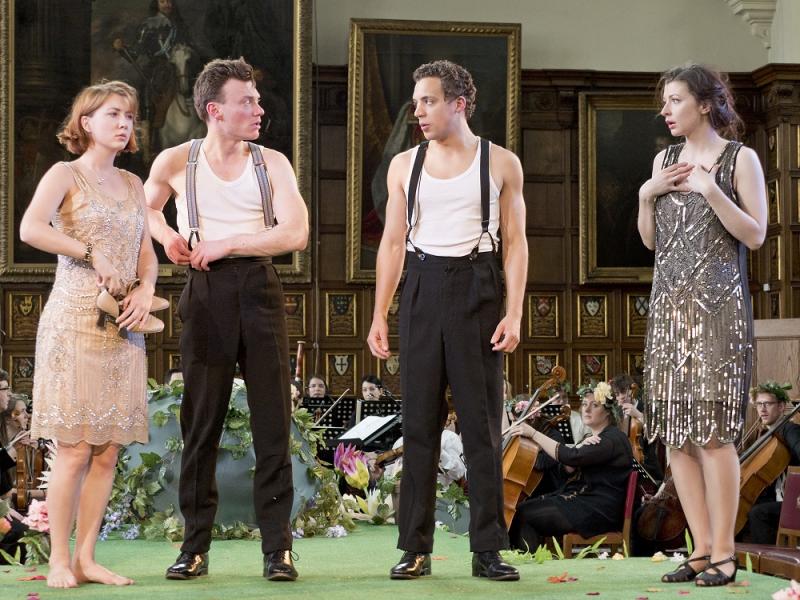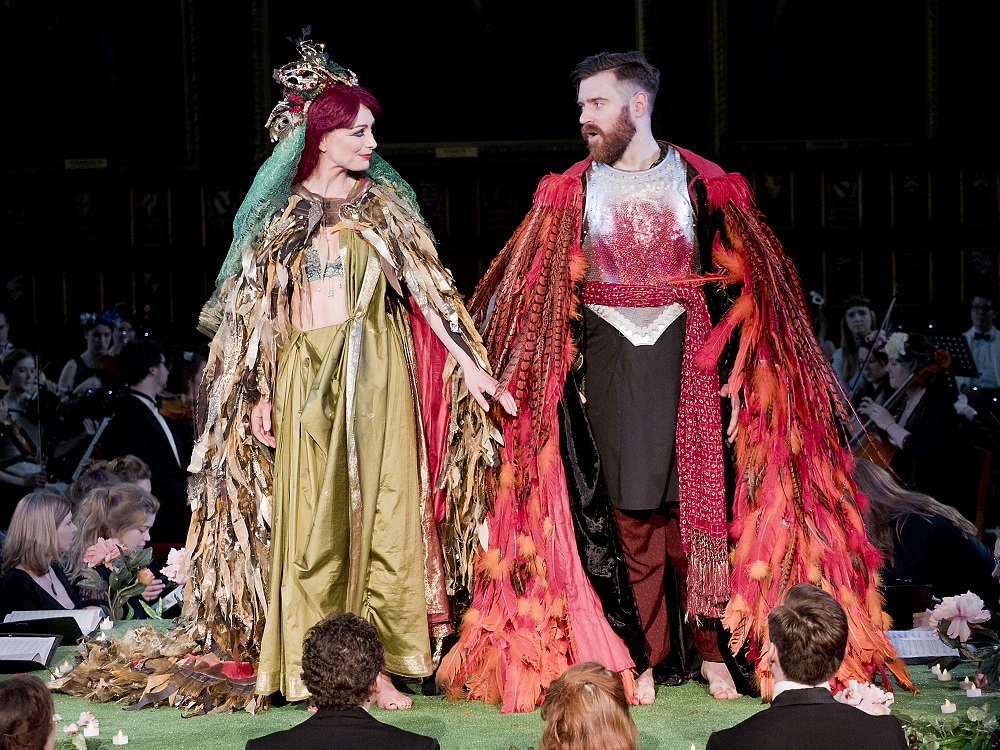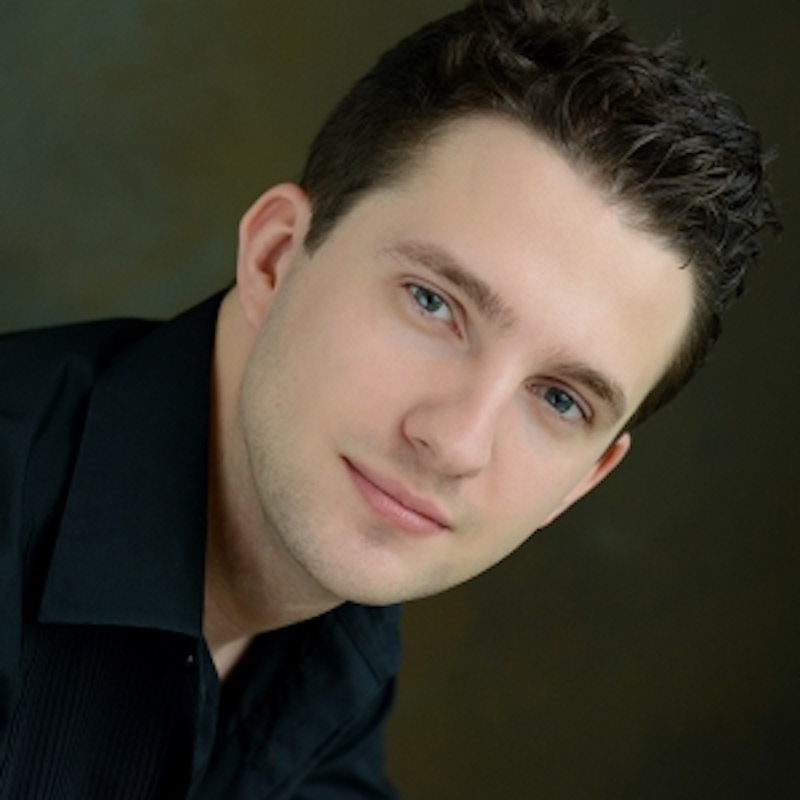A Midsummer Night's Dream, Middle Temple Hall | reviews, news & interviews
A Midsummer Night's Dream, Middle Temple Hall
A Midsummer Night's Dream, Middle Temple Hall
Mendelssohn's incidental music adds to an enchanted Shakespeare evening

You rarely see a full production of Shakespeare's dream play so magical it brings tears to the eyes. But then you don't often get 42 players and 14 voices joining the cast to adorn the text with Mendelssohn's bewitching incidental music, plus the Overture composed 16 years earlier – certainly the most perfect masterpiece ever written by a 17-year-old.
Tightly organised romantic sentiment comes before the Shakespearean sharp edges of David Edwards's pacy supervision, trimming the text but never butchering it as seems to have been the case with Garsington's version last summer. James Henshaw, assistant chorus master at English National Orchestra and working on the company's forthcoming Jenůfa, has the total confidence to get the right precision from the excellent young Outcry Ensemble – game to be flower-wreathed – in the Overture's fairy music, the perfect shaping of its love themes and a rustic rudeness to the mechanicals' bergomask stomp.
Then we're whisked into an Athenian court of good-looking young people in 1920s evening wear. Michael Vivian's work with the actors, his special responsibility, means every sentence is clear and truthful, especially given such excellent acoustics. If Frances McNamee's Helena (McNamee pictured on the right in top image) is the standout of the four lovers, it's only because she has more licence to play the character as the highly-strung, self-dramatising outsider.
 Cue the fairy world with Mendelssohn's Scherzo: eerie puppets on sticks manipulated by the mechanicals we've yet to meet swoop around Joe Sleight's colourful Puck (really coming into his own later when he does all the other voices). David North's Theseus-transformed-as-Oberon is cock of the woodland roost in birdlike helmet and armour; Titania's feathery cape is more splendid still, and with Lucy Thatcher's Hippolyta changed into redhead fairy queen, there's more than a touch of the Vivien Leighs, verging on the Cleopatresque, about this glamorous figure. Designer Colin Mayes has wrought enchantment in making his own technicolor riff on the campery of Max Reinhardt’s celebrated 1935 film.
Cue the fairy world with Mendelssohn's Scherzo: eerie puppets on sticks manipulated by the mechanicals we've yet to meet swoop around Joe Sleight's colourful Puck (really coming into his own later when he does all the other voices). David North's Theseus-transformed-as-Oberon is cock of the woodland roost in birdlike helmet and armour; Titania's feathery cape is more splendid still, and with Lucy Thatcher's Hippolyta changed into redhead fairy queen, there's more than a touch of the Vivien Leighs, verging on the Cleopatresque, about this glamorous figure. Designer Colin Mayes has wrought enchantment in making his own technicolor riff on the campery of Max Reinhardt’s celebrated 1935 film.
Mendelssohn’s weird little march for Titania and her retinue reminds us that Sullivan plundered it for his own Queen of the Fairies' summoning of Iolanthe. Melodrama fragments of music behind the spoken word encapsulate how far ahead the composer was of his time, while the utterly beguiling "Ye spotted snakes" is one of the loveliest songs of the 1840s (Sullivan again took note). Attentive children in the audience were agog at a blasé Bottom (Rob Hughes) translated into asinine form with a really splendid head through which the words can be clearly heard, not just ears or some creepy deconstruction.
 The dramatic climax comes after the interval. Vivian gets his four lovers to enact as vibrant a physical tangle as I've ever seen in the juice-induced chaos; their out-of-breath weariness as Puck leads them up and down is equally impressive. Mendelssohn's Nocturne, then, is all the more welcome in context as purest respite, with Henshaw (pictured above left) once again drawing shapely phrases and horns Elise Campbell and Emma Whately as tone-perfect as any of the great orchestral players.
The dramatic climax comes after the interval. Vivian gets his four lovers to enact as vibrant a physical tangle as I've ever seen in the juice-induced chaos; their out-of-breath weariness as Puck leads them up and down is equally impressive. Mendelssohn's Nocturne, then, is all the more welcome in context as purest respite, with Henshaw (pictured above left) once again drawing shapely phrases and horns Elise Campbell and Emma Whately as tone-perfect as any of the great orchestral players.
There's real teamwork from the rustics as well as the lovers. Following a Wedding March for Theseus and Hippolyta as sonically grand for the space as the pomp of Aida’s triumphal scene, trumpets fanfaring from the other end of the hall, the comical tragedy of Pyramus and Thisbe kicks off amusingly. But hysteria took over last night when Moonshine's little dog laughed so much to see such fun that it crapped on stage. Cue some genuinely improvised comic business and lines taking on fresh meaning about Thisbe’s mantle “stain’d with…blood” and Theseus’s commendation of an act “very notably discharged” (wild applause).
Thankfully Shakespeare and Mendelssohn restore measure and genuine moonshine in the final ritual, the bell of Temple Church chiming nine on cue, only three short of the requisite midnight. Britten's opera and its "Now until the break of day" may have capped this reprise of the overture music to "Through the house with glimm'ring light", but with candlelit blessing of the house and the chief fairies with lights in their headgear, this was still a dewy-eyed way to end a very classy evening.
rating
Share this article
Add comment
The future of Arts Journalism
You can stop theartsdesk.com closing!
We urgently need financing to survive. Our fundraising drive has thus far raised £49,000 but we need to reach £100,000 or we will be forced to close. Please contribute here: https://gofund.me/c3f6033d
And if you can forward this information to anyone who might assist, we’d be grateful.

Subscribe to theartsdesk.com
Thank you for continuing to read our work on theartsdesk.com. For unlimited access to every article in its entirety, including our archive of more than 15,000 pieces, we're asking for £5 per month or £40 per year. We feel it's a very good deal, and hope you do too.
To take a subscription now simply click here.
And if you're looking for that extra gift for a friend or family member, why not treat them to a theartsdesk.com gift subscription?

Comments
For clarification: although
For clarification: although David Edwards took overall charge of the production, the wonderful direction of the actors was in fact executed by Michael Vivian. Except, of course, for the dog...
Yes, that's how I understood
Yes, that's how I understood it and tried to explain it, but it's a rather unusual situation to have two directors. I've altered the text to try and clarify further. All was in harmony, though. Except, of course, for the dog. Did he/she behave him/herself on the second night, I wonder, or was the understudy required?
Frank the dog behaved
Frank the dog behaved perfectly at the second (and sadly, last) performance. Somehow the play scene didn't seem quite so hilarious...